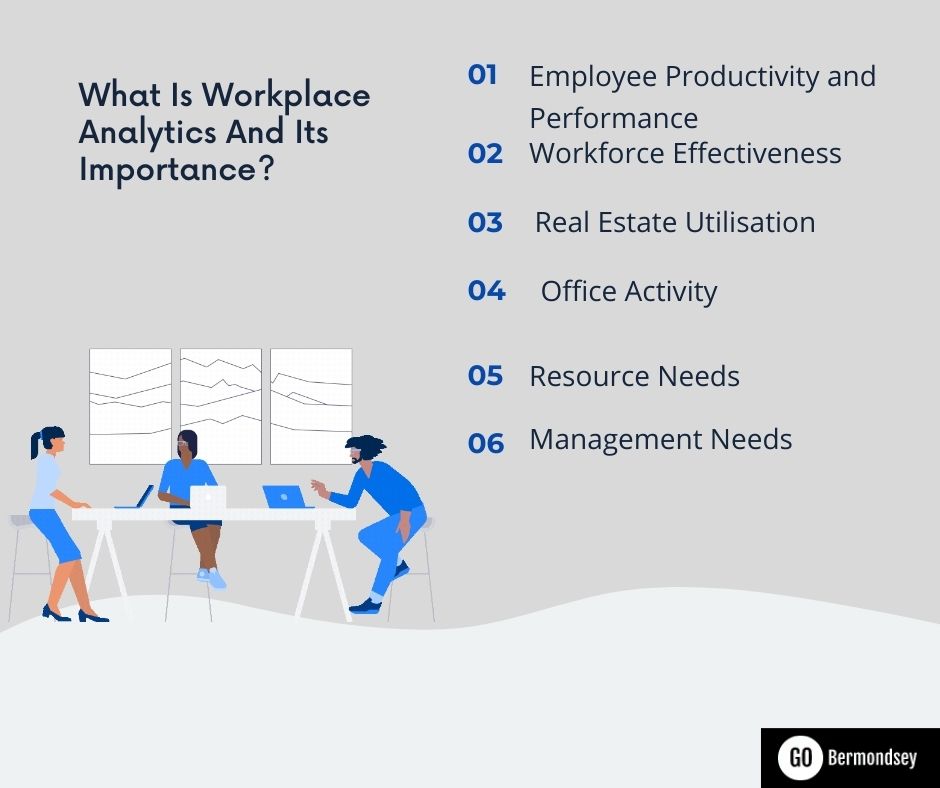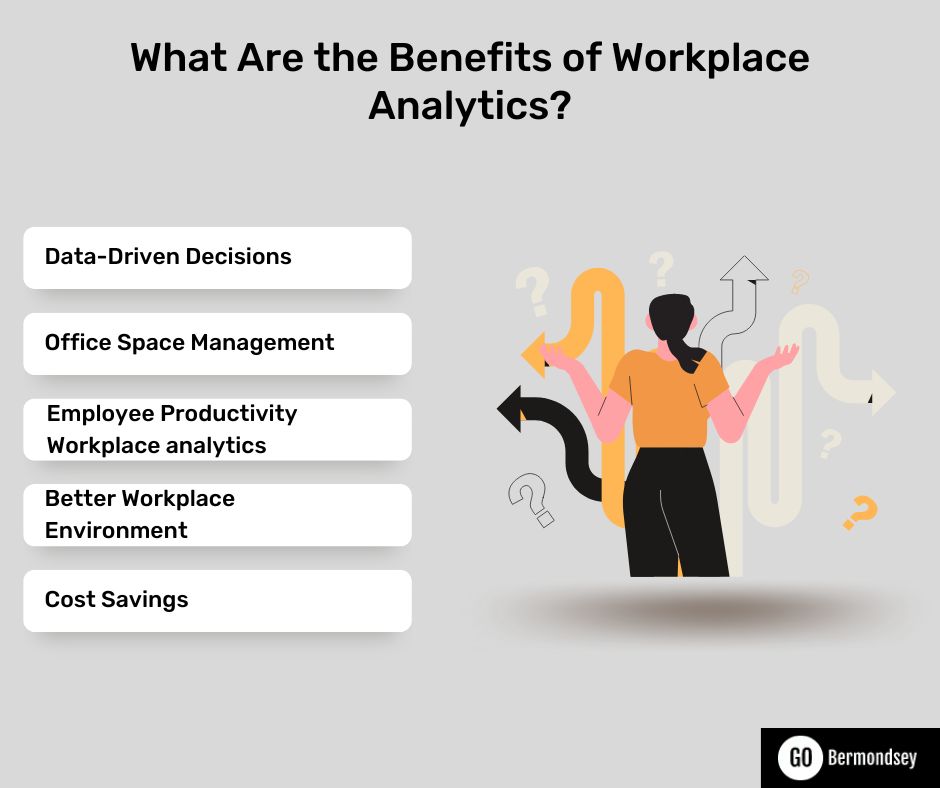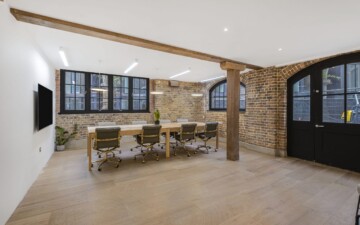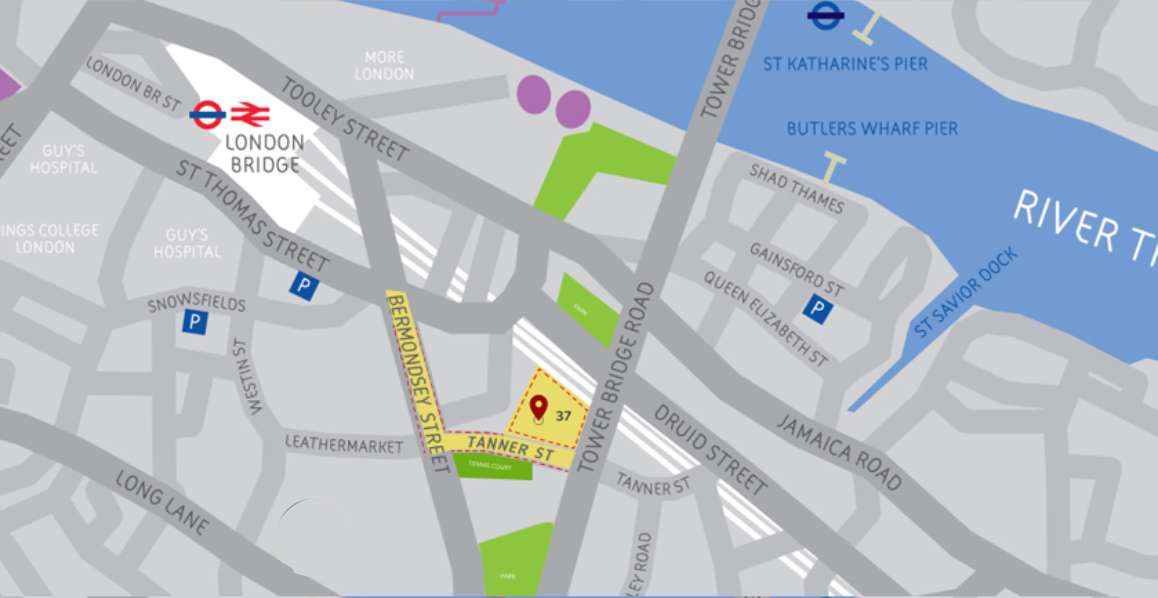Imagine a work environment where every decision is backed by data and every space is optimised for productivity and collaboration. That’s what workplace analytics can do for you. This cutting-edge approach transforms businesses’ operations by harnessing data to create smarter, more efficient workspaces. Forrester reports that insight-driven businesses are growing at an impressive rate of over 30% annually. Yet, more than half of businesses lack the data needed to make informed decisions about their most vital component—the workplace. Don’t let your business join these ranks.
In this article, we cover everything you need to know about workplace analytics. Explore what it is, why it’s essential, its types, and the key questions to consider when selecting the right workplace analytics software for your organisation.
What Is Workplace Analytics And Its Importance?

Workplace analytics consists of tools that measure key metrics like employee attendance, visitor volume, and space usage. These insights provide a clear understanding of how your workplace is being used, empowering you to make informed decisions for optimal resource allocation and efficiency.
Workplace analytics leverage various data sources from multiple business platforms to gain insight into:
- Employee productivity and performance: This helps you gauge individual and team productivity to enhance overall business performance.
- Workforce effectiveness: This helps you identify strengths and areas of improvement to optimise operations.
- Real estate utilisation: This helps you understand how you can maximise office space, reduce overhead costs, and ensure a productive work environment.
- Office activity: This allows you to track day-to-day operations and recognise patterns that can help you improve workflow and efficiency.
- Resource needs: This helps you analyse whether employees have the necessary tools and resources to perform their tasks effectively.
- Management needs: Insight into the workplace allows leadership to make informed decisions for long-term business success.
Examples of Workplace Analytics
Here’s a look at what you can measure with workplace analytics:
- Employee Attendance
Analysing employee attendance trends allows you to understand how many employees prefer to work from the office and make informed decisions about space and resource requirements during the work week.
- Meeting Room Utilisation
Understanding how often your meeting rooms are booked, which ones are employee favourites, and the most sought-after amenities like projector screens and A/V equipment helps you optimise office space usage. These insights enable you to make informed decisions about the type and number of meeting rooms needed, enhancing overall efficiency.
- Desk Utilisation
Gaining insight into your employees’ desk booking trends allows you to tailor your workspace to their preferences and needs. For example, if a particular office area is frequently overbooked, you can relocate desks from underutilised areas to better accommodate your team.
- Visitor Volume
Having data on visitor foot traffic allows you to staff your front desk appropriately during peak hours and create a good first impression. Custom sign-in procedures ensure guests complete necessary documentation, while security checks help identify and address any gaps.
What Are the Benefits of Workplace Analytics?

Here are the advantages of workplace analytics:
- Data-Driven Decisions: Workplace analytics allows businesses to make informed decisions by leveraging data. Whether it’s return-to-office policies or resource allocation, businesses can rely on their workplace analytics to understand the best course of action.
- Office Space Management: With workplace analytics, businesses gain granular insight into how their space is being used. It can help them identify underutilised office spaces, employee footfall, etc., which can guide them in optimising their office space.
- Employee Productivity: Workplace analytics improves employee productivity by tailoring office spaces to support different working needs, optimising resource allocation, and ensuring the right facilities, such as meeting rooms, A/V equipment, and well-stocked kitchens, are available when needed.
- Better Workplace Environment: You can leverage workplace analytics to gain insight into employee preferences and resource utilisation patterns to create an office space that your employees look forward to.
- Cost Savings: With Workplace analytics, you can promote cost savings by optimising resource allocation, reducing wastage, and ensuring effective and efficient use of office spaces and amenities.
Types of Workplace Analytics: Predictive Vs Prescriptive Workplace Analytics
Accenture finds that 68% of high-growth organisations have adopted a ‘productivity anywhere’ workforce model. With the hybrid workplace model here to stay, platforms enabling secure file-sharing, chatting, and video-calling are as important as ever. These tools are a treasure trove of data that can offer valuable insight into how your team functions.
Insights extracted from these solutions can be used for predictive or prescriptive analytics:
- Predictive Analytics: This involves aggregating data to predict future business outcomes. Data on when, where, and how your team works may help you foresee possible turnover rates, retention of talent, etc.
- Prescriptive Analytics: This involves making recommendations by analysing current data. For instance, predictive analytics can help you recognise ways to drive employee satisfaction and workplace experience.
Both of the above workplace analytics offer unique benefits to businesses. When choosing between them, be sure to examine your specific needs.
Where Can You Access Workplace Analytics?
The right workplace analytics tool can significantly impact your business operations and decisions. It can offer you valuable insight into your workplace and empower you to make informed decisions based on historical data, resulting in improved business outcomes.
The source of these data insights depends on your tech stack or the tools and solutions you’re leveraging within your business. Here are some examples of solutions that offer workplace analytics:
- Slack
This cloud-based team communication platform offers businesses private chat groups, channels and direct messaging features to streamline professional communication. Its analytics dashboard offers data on active users, files uploaded, messages sent, etc.
- Zoom
This video conferencing platform allows you to access dashboard statistics and extract data as a CSV file for further analysis. It gathers critical data regarding the number of meetings hosted, call quality feedback, user locations and devices.
How Workplace Analytics Transforms Office Spaces
Workplace analytics transforms office spaces by optimising workplace layouts, enhancing employee collaboration, and boosting overall productivity. Businesses can create environments that foster innovation and efficiency by leveraging employee attendance and resource utilisation data.
Such operational insight can lead to smarter decisions, from reducing energy consumption and costs to tailoring spaces as per employee needs and preferences.
Tools and Technologies Used in Workplace Analytics
Artificial Intelligence (AI) and Machine Learning (ML) have revolutionised data analysis and workplace analytics. These cutting-edge technologies can not only analyse massive amounts of data but also extract insight and patterns that might go unnoticed by human analysts. Businesses can leverage this incredible insight to make informed decisions regarding resource allocation, employee workload, etc.
Questions To Consider When Looking for Workplace Analytics Software
Here’s a look at the questions you should consider when analysing workplace analytics software:
- Do you need a point solution or a comprehensive workplace solution?
When considering workplace analytics, prioritise end-to-end software over a single-use solution. You could be trying to streamline meeting room bookings today, but tomorrow, you might need a solution to optimise space and understand attendance trends. A comprehensive platform provides unified insights, from space utilisation to foot traffic, streamlining operations and scaling your business seamlessly.
- Does your chosen software integrate with third-party applications?
You don’t want to onboard your work analytics software only to realise it’s incompatible with your current tech stack. Make sure to analyse the flexibility of your chosen solution. Onboarding software that integrates with your current business systems helps save you and your employees time and effort of shifting between workplace tools and promotes efficiency and productivity.
- Can the software scale to meet your business needs?
As your business expands, so will your workspace needs. Select a workplace analytics solution that scales with your growth, is capable of managing multiple locations, and providing a comprehensive global overview. This ensures continuity and avoids the need to switch solutions as your organisation evolves.
- Is your chosen software employee-friendly?
While your chosen workplace analytics software must facilitate informed decision-making, it must also be easy for your employees to use. If your chosen solution is difficult to use and requires extensive training, it can cost you employee efficiency and satisfaction. You can check the ease of use of solutions through demos and online user reviews.
Final words
Workplace analytics is a game-changer for any organisation aiming to optimise its workspace and boost productivity. By leveraging data, you can make informed decisions that enhance the work environment, streamline operations, and, ultimately, drive success.
At GO (Garden Office) Bermondsey, we understand the importance of a well-designed and efficient workspace. Nestled in the heart of London, our office spaces offer a perfect blend of style and functionality, designed to meet the diverse needs of modern businesses.
Ready to see how our spaces can transform your workday? Book a visit and experience firsthand how our dynamic work environments can support your business goals.







